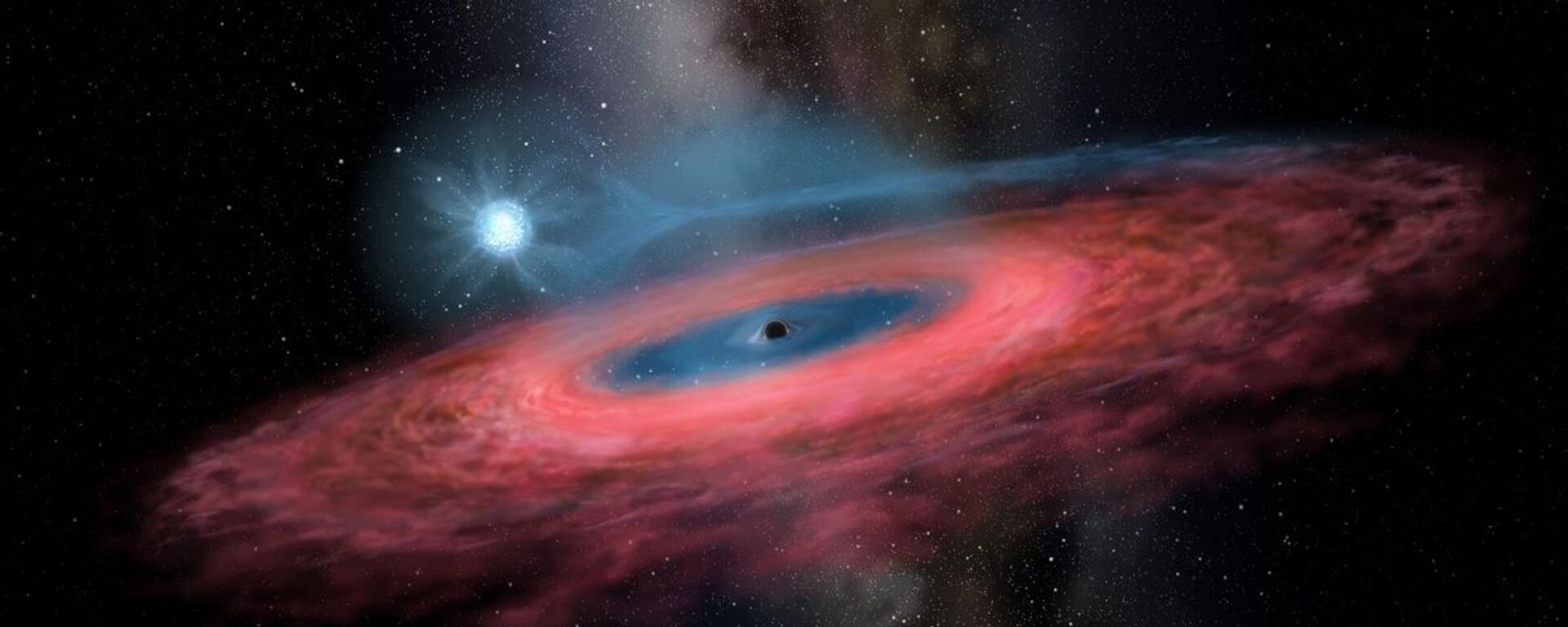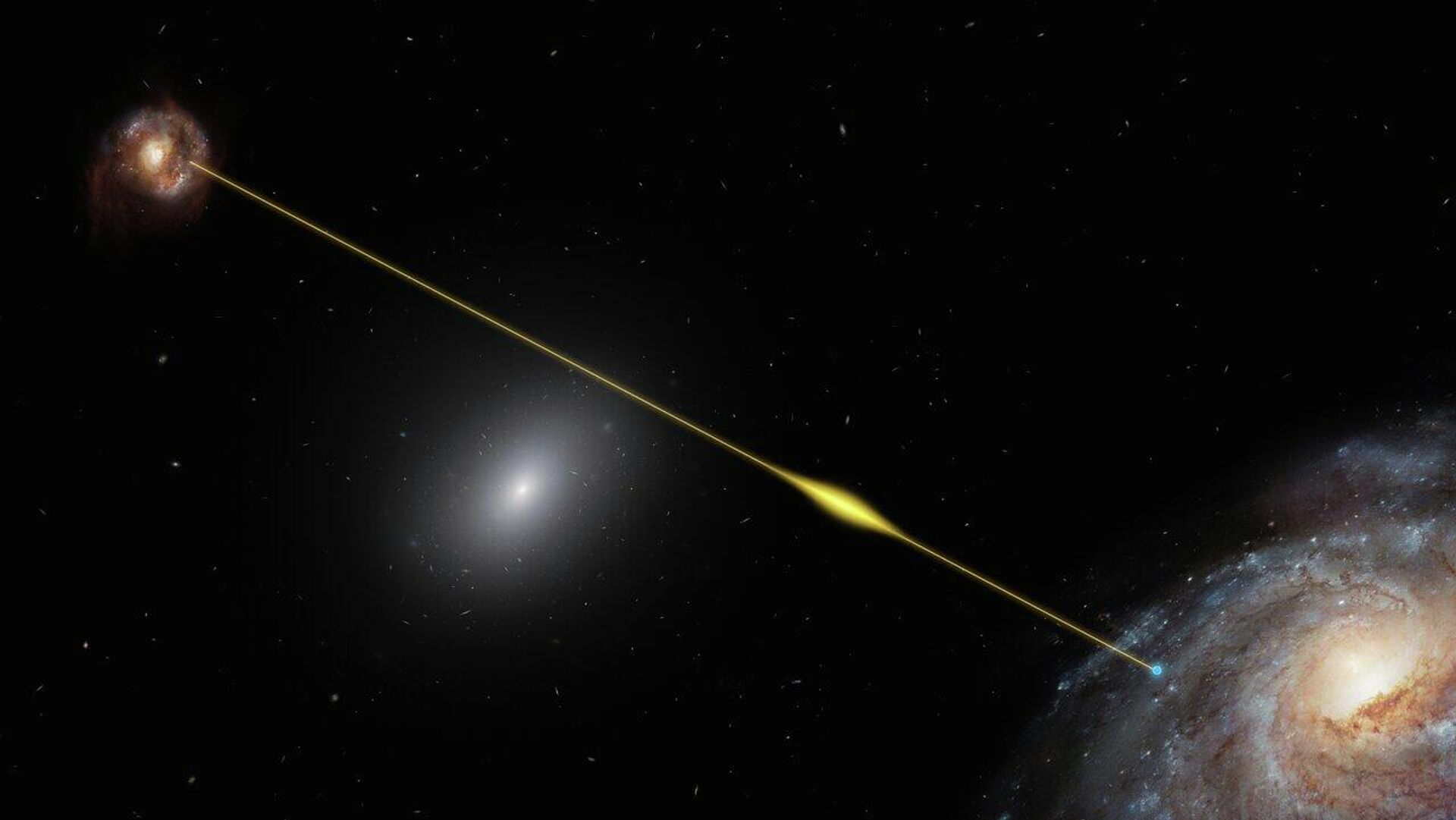https://sputnikglobe.com/20220226/astrophysicists-discover-origin-of-closest-known-mysterious-radio-signals-study-says-1093381136.html
Astrophysicists Discover Origin of Closest Known Mysterious Radio Signals, Study Says
Astrophysicists Discover Origin of Closest Known Mysterious Radio Signals, Study Says
Sputnik International
Astrophysicists Discovered Origin of The Closest Known Mysterious Radio Signals, Study Says
2022-02-26T00:59+0000
2022-02-26T00:59+0000
2022-02-26T00:59+0000
science & tech
fast radio burst (frb)
neutron stars
galaxy clusters
globular cluster
https://cdn1.img.sputnikglobe.com/img/07e6/02/1a/1093381246_0:0:1281:721_1920x0_80_0_0_26a522d00402f8f13c05ce7b478b2d9a.jpg
Each of these flashes lasts only thousandths of a second, but during this time it transmits as much energy as the Sun radiates daily.An international team of astrophysicists has studied a fast radio burst (FRB) and discovered it comes from the spiral galaxy M81, which makes it the nearest point of origin of these mysterious flashes, according to a study published in Nature.This FRB, discovered in 2020 and dubbed FRB 20200120E, was said to have its source located in a globular cluster of the M81 at a distance of about 6.5 light-years from the center of the cluster.The finding has puzzled researchers, as globular clusters usually are formed by very old and typically low-mass stars.This contradicts the generally accepted assumption that sources of fast radio flares are usually found in neighborhoods crowded with young, massive stars. In clusters of young stars, stellar explosions often occur, leaving behind magnetized remnants of stars called magnetars (or neutron stars), which are often associated with fast radio bursts.White dwarfs are the remnants of low-mass stars, and the transformation of two white dwarfs into an exotic magnetar can occur under conditions of a tight globular cluster when two such objects approach each other before the start of effective gravitational interaction with mass transfer from one white dwarf to another. The accretion of mass turns a white dwarf into a superdense neutron star with a powerful magnetic field (magnetar), which gives rise to fast radio bursts.The study's authors noted that “compact binaries are efficiently formed inside globular clusters, so a model invoking them could also be responsible for the observed bursts.” Past studies have also suggested the impact of a black hole may be responsible. This latest discovery may shed light on the nature of energy emissions, whose causes are still unknown.
https://sputnikglobe.com/20220216/does-discovery-of-black-hole-hiding-in-star-cluster-outside-of-our-galaxy-prove-einsteins-theory-1093074660.html
Sputnik International
feedback@sputniknews.com
+74956456601
MIA „Rosiya Segodnya“
2022
News
en_EN
Sputnik International
feedback@sputniknews.com
+74956456601
MIA „Rosiya Segodnya“
Sputnik International
feedback@sputniknews.com
+74956456601
MIA „Rosiya Segodnya“
mysterious radio signals, fast radio bursts, m81 galaxy, white dwarf, globular clusters, frb 20200120e
mysterious radio signals, fast radio bursts, m81 galaxy, white dwarf, globular clusters, frb 20200120e
Astrophysicists Discover Origin of Closest Known Mysterious Radio Signals, Study Says
Fast radio bursts are extremely short bursts of radiation in outer space. Their nature remains unknown since their discovery in 2007. Hundreds are observed daily in the sky, flashing in all directions. Most of their sources lie at extreme distances from the Earth, in galaxies that are billions of light-years away from us.
Each of these flashes lasts only thousandths of a second, but during this time it transmits as much energy as the Sun radiates daily.
An international team of astrophysicists has studied a
fast radio burst (FRB) and discovered it comes from the spiral galaxy M81, which makes it the nearest point of origin of these mysterious flashes, according to a study
published in Nature.
This FRB, discovered in 2020 and dubbed FRB 20200120E, was said to have its source located in a globular cluster of the M81 at a distance of about 6.5 light-years from the center of the cluster.
The finding has puzzled researchers, as globular clusters usually are formed by very old and typically low-mass stars.

16 February 2022, 09:31 GMT
This contradicts the generally accepted assumption that sources of fast radio flares are usually found in neighborhoods crowded with young, massive stars. In clusters of young stars, stellar explosions often occur, leaving behind magnetized remnants of stars called magnetars (or neutron stars), which are often associated with fast radio bursts.
“We propose instead that FRB 20200120E originates from a highly magnetized neutron star formed either through the accretion-induced collapse of a white dwarf or the merger of compact stars in a binary system,” the study says.
White dwarfs are the remnants of low-mass stars, and the transformation of two white dwarfs into an exotic magnetar can occur under conditions of a tight globular cluster when two such objects approach each other before the start of effective gravitational interaction with mass transfer from one white dwarf to another. The accretion of mass turns a white dwarf into a superdense neutron star with a powerful magnetic field (magnetar), which gives rise to fast radio bursts.
The study's authors noted that “compact binaries are efficiently formed inside globular clusters, so a model invoking them could also be responsible for the observed bursts.” Past studies have also suggested the impact of a
black hole may be responsible. This latest discovery may shed light on the nature of energy emissions, whose causes are still unknown.




